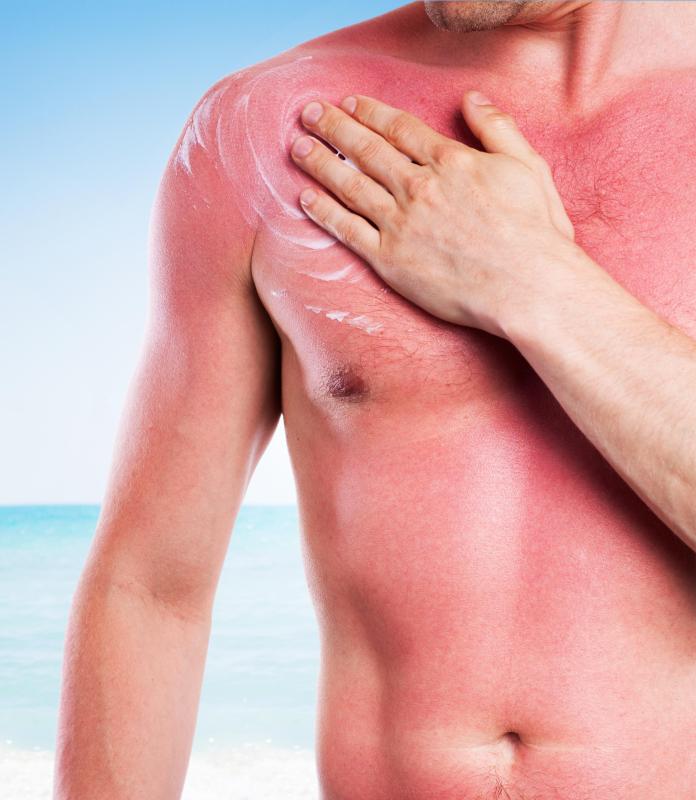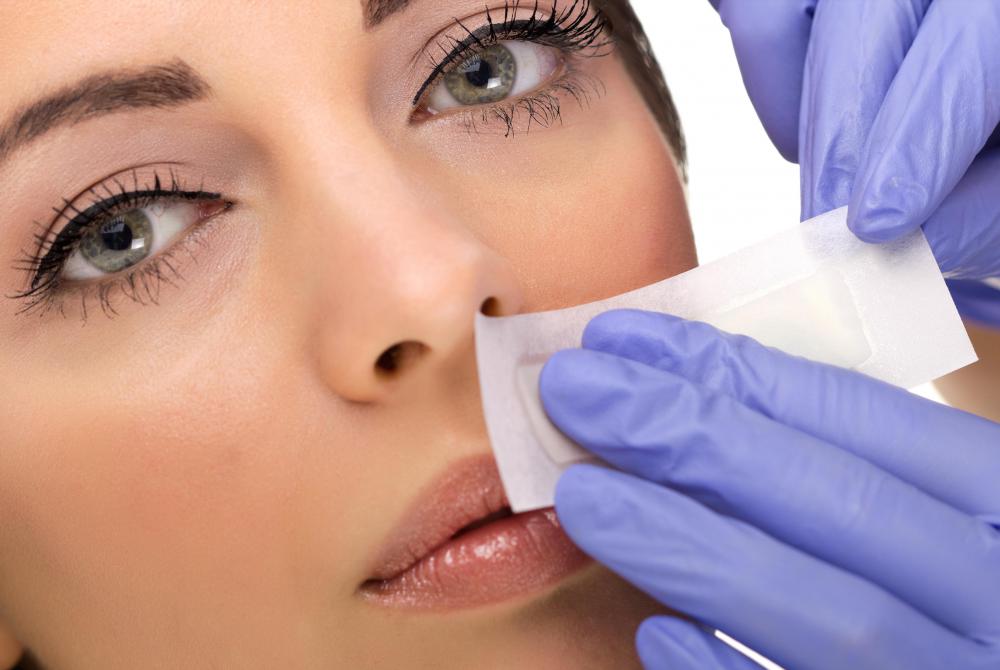At WiseGEEK, we're committed to delivering accurate, trustworthy information. Our expert-authored content is rigorously fact-checked and sourced from credible authorities. Discover how we uphold the highest standards in providing you with reliable knowledge.
What Are the Best Tips for Waxing with Sensitive Skin?
Both women and men alike often turn to waxing when it comes to removing unwanted hair. People have been waxing for thousands of years, and while some might claim that it is painful, it is an effective way to remove unwanted hair on any part of one’s body. Some people also claim that waxing stimulates hair growth, but this is untrue. When it comes to waxing with sensitive skin, there are several tips that can be followed so that inflammation and pain are kept to a minimum. These tips include obtaining a wax that is created for sensitive skin, making sure that the skin area being waxed is completely dry and knowing when to apply olive or coconut oil to waxed skin.
Sensitive skin itself is hard to manage, especially when it comes to waxing. The most beneficial tip a person can follow when it comes to waxing sensitive skin is to obtain a wax that is specially formulated for this type of skin. There are a large number of sensitive skin waxing products available on global markets that are available for purchase. If a person wishes to, he or she can even prepare a do-it-yourself wax at home. All that is needed to create wax for sensitive skin are sugar, boiled water, lemon juice and honey.

Before applying any type of wax to one’s body, it is very important to make sure that the skin being waxed is completely dry and non-greasy. People who are waxing with sensitive skin will also want to make sure that they hold their skin taunt while waxing, because this helps prevent the skin from being ripped. A person who is waxing sensitive skin should never wax the same area of skin more than twice during a single waxing session. If the person cannot remove all unwanted hair after waxing the area twice, then he or she should pluck the remaining unwanted hair. Many people also find it beneficial to apply cold packs to areas of skin that have been waxed, because this helps reduce inflammation and redness.

Most people waxing with sensitive skin will endure some redness or inflammation. Olive or coconut oil should be applied to areas of waxed skin that remain red or inflamed for a time period exceeding two hours. It is imperative that nothing astringent is applied to areas of skin that have been waxed, because this will only increase inflammation and redness. A person who is waxing sensitive skin should never wax areas of skin that are irritated or sunburned.
AS FEATURED ON:
AS FEATURED ON:



















Discussion Comments
People who have sensitive skin should stop using various products a few days before waxing. For example, retinol creams can make sensitive skin even more sensitive, and cause irritation when waxing over top of areas where they had been applied.
@spotiche5- I have used do-it-yourself wax, and I think its effectiveness depends on the type of hair you use it to remove. While thick, coarse hair is difficult to remove with a homemade wax, fine hair usually comes out without much trouble.
I was wondering if anyone has experience using a homemade hair removing wax. It sounds simple to do, but is it really effective?
Post your comments